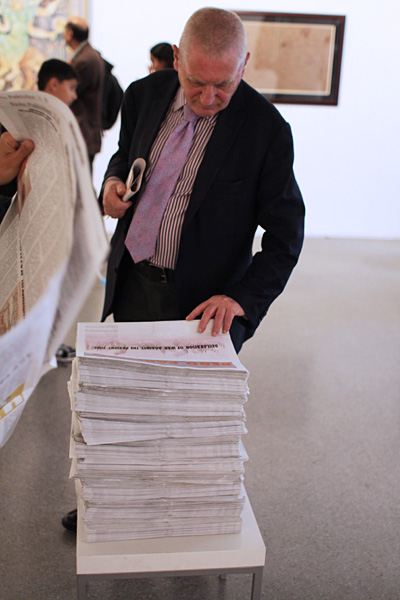In total Greasy P printed out 51 photos during the Homeless Gallery group show. All images will be used to create another artwork. Big thank you goes to all who took part in the project.



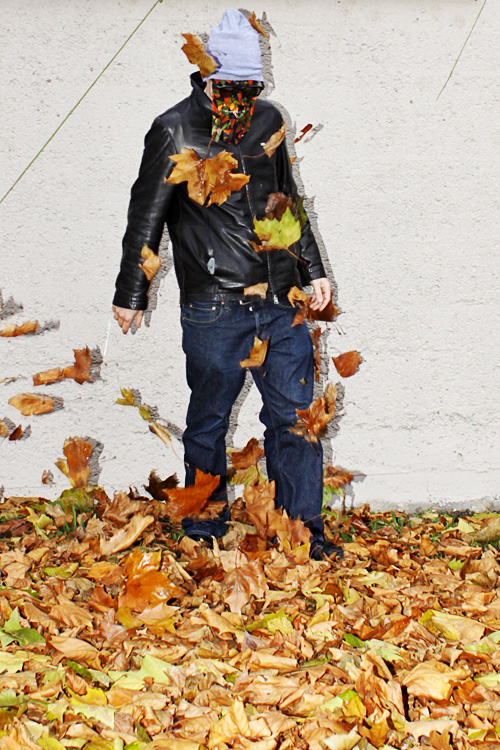
In total Greasy P printed out 51 photos during the Homeless Gallery group show. All images will be used to create another artwork. Big thank you goes to all who took part in the project.





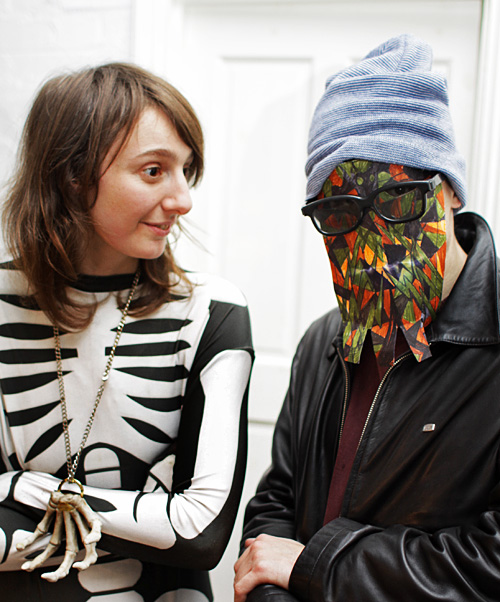
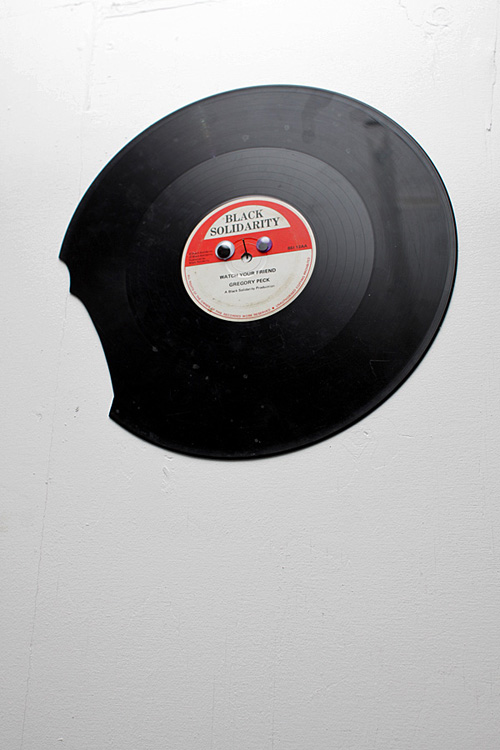
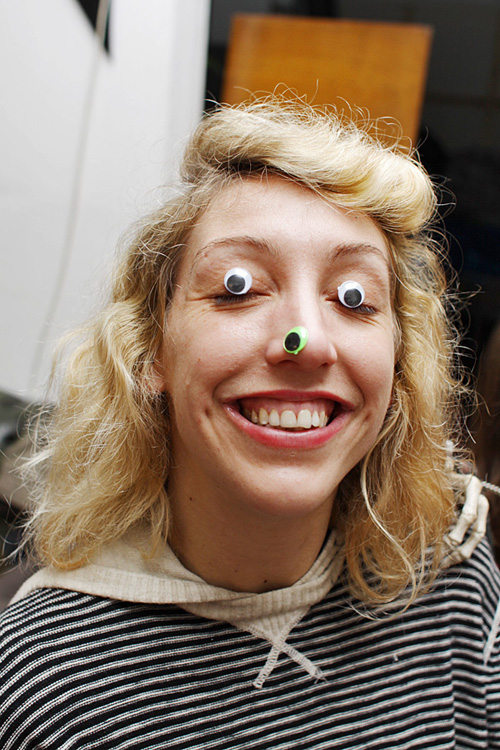





Below are selected photos from the photo-performance by Greasy P in the Homeless Gallery at Dilston Grove.
During the private view and the following day Greasy P was taking photographs with visitors and printing them out on his portable printer. The printed photos (of size – 2×3″ | 5×7.6cm) were put on the wall and become his installation titled Greasy Photo.
The Homless Gallery exhibition is on from 12th to 21st November 2010 and is open daily from 9am to 4pm.








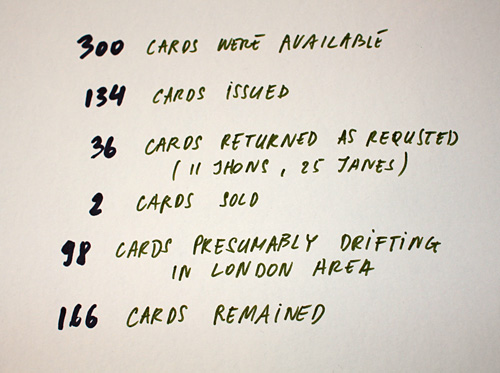

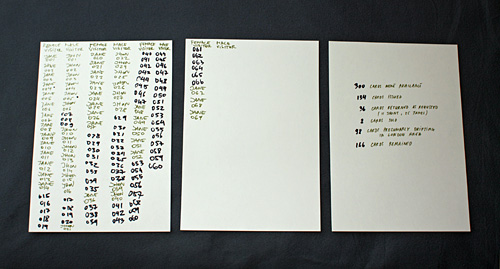
WAYS AND MEANS TO GET OUT!! – Fact sheet –
Production costs
-Â Â Â 300 blank cards: L 20
-Â Â Â White tack / masking tape: L 3
-Â Â Â Spray paints: L 15
-Â Â Â Printing paper: L 12
Total: L 50
Production time
-Â Â Â 2 days, 12 hours
Piece dimension
Room size â approx 700cm x 450cm
Wall painting size â 640cm x 161cm
From 300 cards incorporated in the painting 134 had been taken, 36 returned as requested â 11 Jhonâs and 25 Janeâs. The total of 98 cards left the building from which 2 had been sold for L 3 each. The one sold card is expected to go to Croatia; the rest is presumably drifting in London area. 166 cards remained.
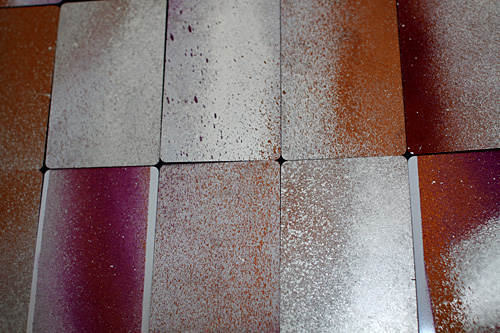
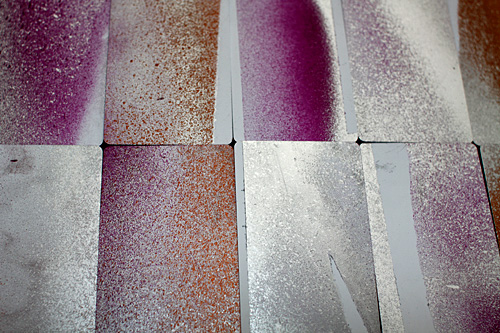

A performative piece WAYS AND MEANS TO GET OUT!! was executed during a group art event TO BE DESTROYED at 25 Soho Square, London on 5th November 2010.
The WAYS AND MEANS TO GET OUT!! project included following elements: a wall painting incorporated 300 plastic cards (dimensions of the painting – w: 640cm, h:161cm), a portable printer, a mobile phone with a photo-camera, 3 blank sheets of paper and the wall slogan âGet yo passâ.
Anyone entering the room could choose one card which allowed her/him to get out of the building (there was a guard on the door collecting the cards). Once the person picked up the card the visitor name and the number was written down on the pass. All female visitors were JANE, all male visitors were JHON. The track of the visitors- the name and the number- was written down on a sheet of paper. Selected randomly visitors get opportunity to print out and stick their photo to the pass. From 300 cards 134 had been taken form the wall painting and only 36 of them returned. The rest, 98 cards, left the building and presumably they drift in Great London area.

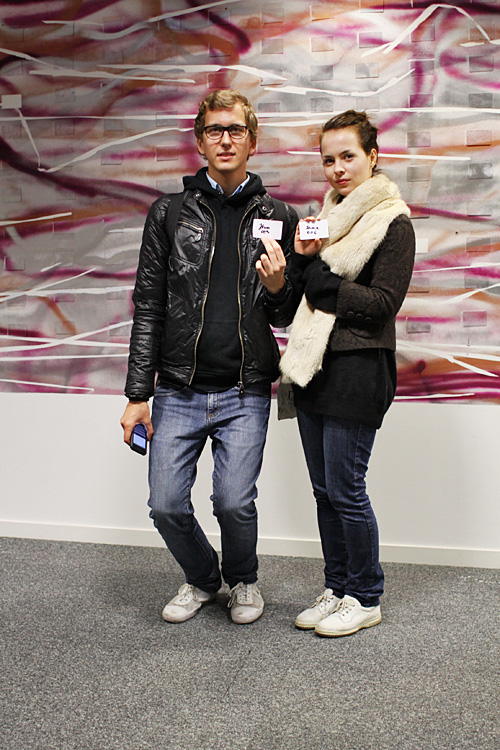
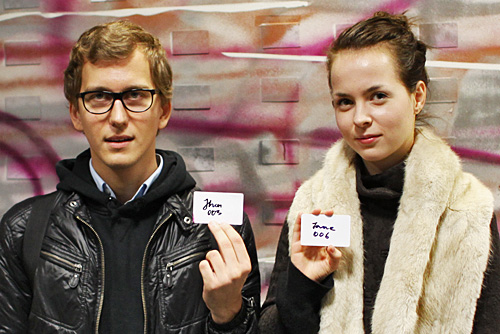
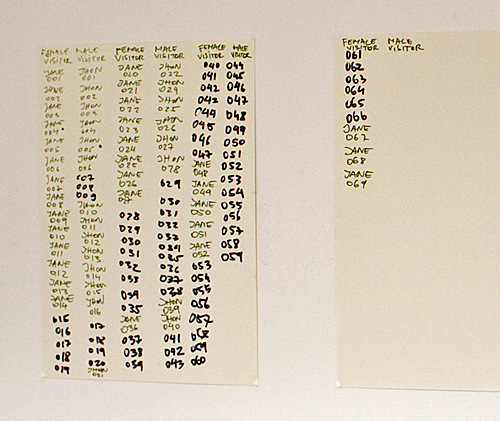
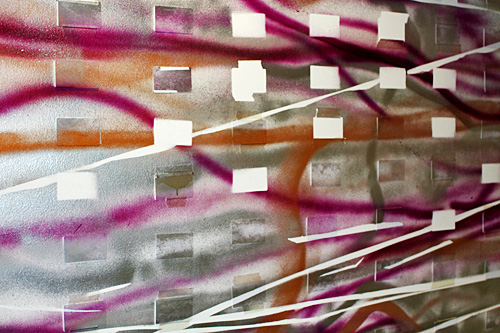
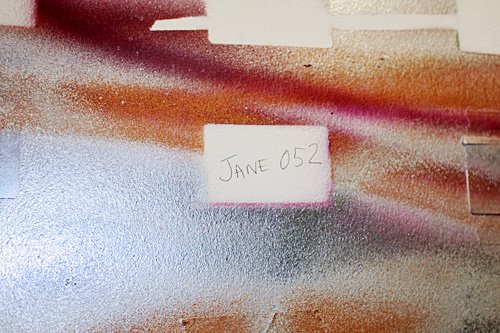
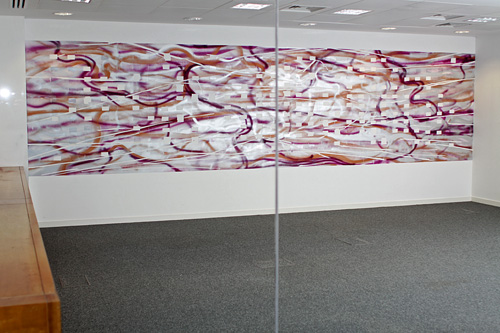
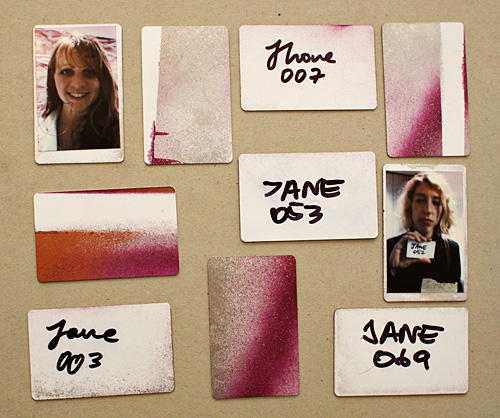

Below are photos showing how the WAYS AND MEANS TO GET OUT!! project looks right now. The current state consists of a wall painting with 300 plastic cards mounted with a white tack or masking tape.
During the TO BE DESTROYED event those cards will be peel off and issue to the visitors. Some will be even lucky to get a photographic portrait printed on them. By removing the cards a new pattern will be created in the field of the painting.
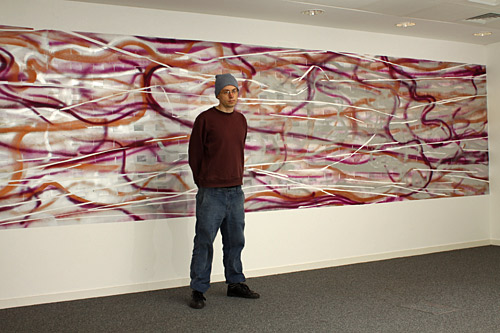
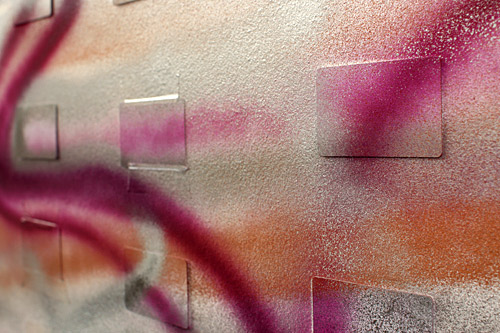
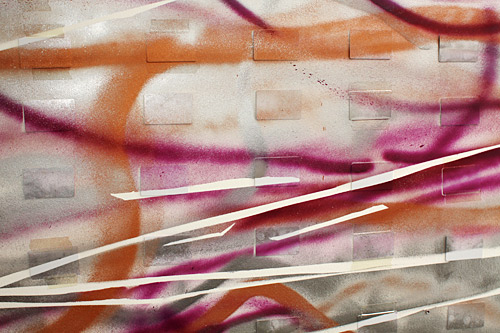

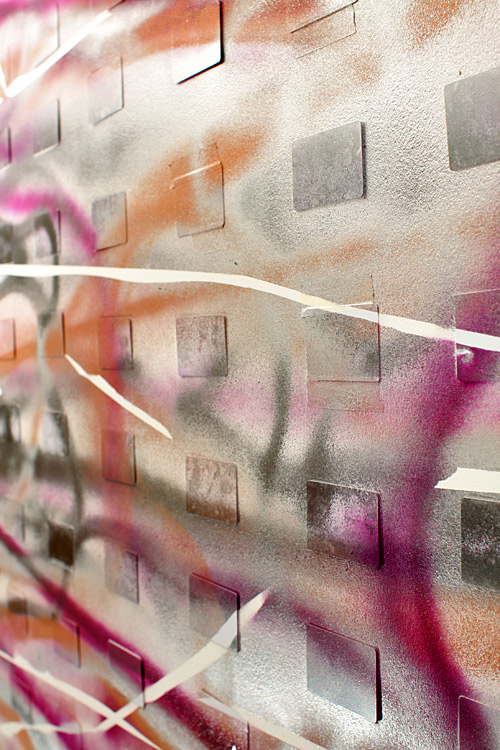
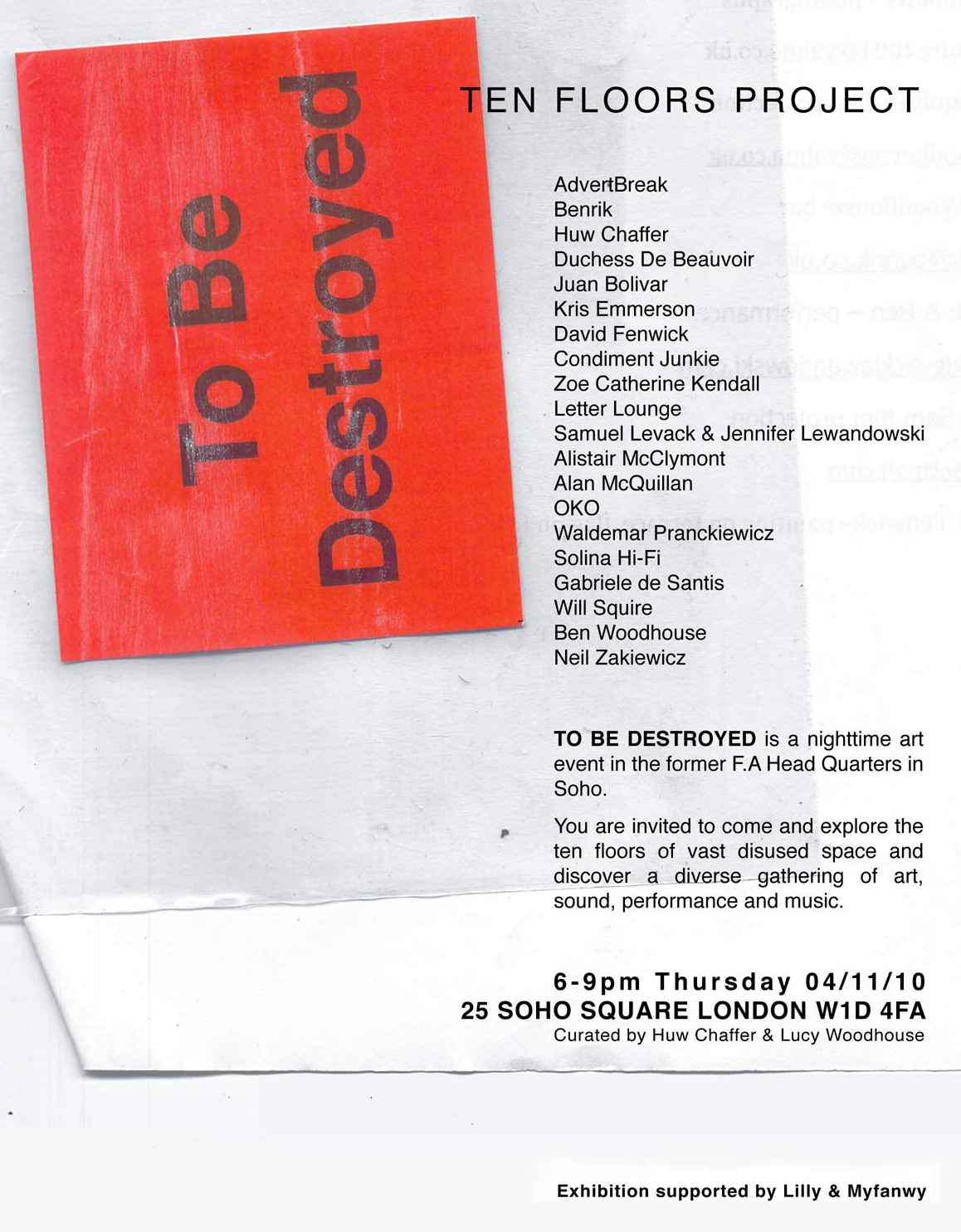
The Redo Pakistan newspaper Issue 2010 had been launched in London on Tuesday, 24th August 2010. The current issue is tagged with a slogan DECLARATION OF WAR AGAINST THE PRESENT TIME and contains an international mixture of visuals and written materials. The front page features a sculpture of Fasting Jinnah, the founder of Pakistan is merged into the statue of fasting Buddha. The paper is given for free during various events and for more information please visit the Other Asias website.
My contribution to the newspaper is a short text which I am presenting below together with a few photos from the launch evening.
Waldemar Pranckiewicz
Plan and PlantIn 1982 at the cyclical exhibition Documenta 7 in Kassel, Germany, artist Joseph Beuys started a project called 7000 Oaks. He proposed to plant seven thousand trees around the town, each paired with a basalt stone. The project was completed at the opening of Documenta 8 in 1987. He wanted his project to be extended to other part of the world and had an impact for other urban areas. So far his idea of planting trees was partly executed only in one street of New York.
“I think the tree is an element of regeneration which in itself is a concept of time. The oak is especially so because it is a slowly growing tree with a kind of really solid heartwood. It has always been a form of sculpture, a symbol for this planet.” Quote from Beuys in: Richard Demarco, “Conversations with Artists” Studio International 195, no. 996 (September 1982), 46.
A different approach, sort of DIY, is proposed by Guerrilla Gardening. The project started in 2004 in London and it is basically about taking care of neglected or not used public places to grow flowers or vegetables. Whole project is not politically orientated unlike the Green Guerrillas activities of â70. The founder of the project Richard Reynolds is saying that he only wants people get to gardening and makes a few places near his home look much nicer. On his website – www.guerrillagardening.org – he posts tips how to do guerrilla gardening and produce for example the seed bombs- a mix of seeds used in places where digging the ground is too difficult. According to him the fight of gardeners is against “two conditions of the landscape: scarcity and neglect, problems that come from how we all use the land.”
“Most people own no land. Most of us live in cities and have no garden of our own. We demand more from this planet than it has space and resources to offer. We are running out of space. Guerrilla gardening is a battle for resources, a battle against scarcity of land, environmental abuse and wasted opportunities. It is also a fight for freedom of expression and for community cohesion. It is a battle in which bullets are replaced with flowers (most of the time).” Richard Reynolds in: On guerrilla gardening, p.7.

